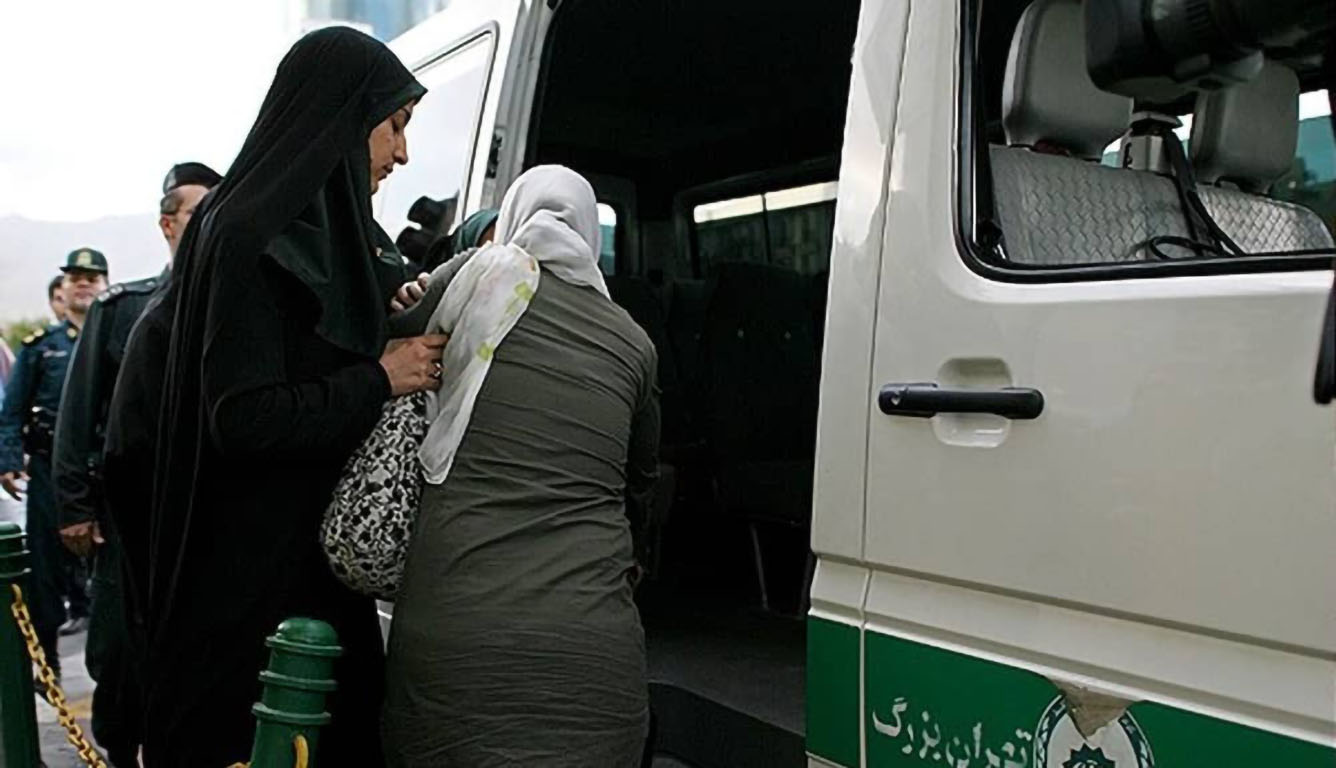Written by Amir Taghati
Three-minute read
While media outlets and analysts worldwide speculate about a potential war between Iran and its allies on one side, and Israel and its Western supporters on the other, the Iranian regime is ramping up internal suppression in anticipation of the consequences of numerous domestic and regional crises.
Unresolved economic calamities have left regime leaders worried, with many officials expressing concerns about the possibility of new unrest. The dollar’s value has soared past 70,000 tomans in the past 24 hours, setting new records daily and further diminishing the purchasing power of the people.
Consequently, the regime is resorting to its perennial playbook. In recent speeches, Ali Khamenei, the Supreme Leader of the regime, labeled mandatory hijab as a “religious and legal constraint” and deemed unveiling a “religious and political sin,” calling for action against “religious deviance.”
On Saturday, April 13, Abbas-Ali Mohammadian, the commander of the regime’s State Security Force (SSF) in Tehran Province, declared that his forces, plus the SSF forces in other provinces, will take strict measures against individuals promoting what he refers to as “breaking social norms,” such as what he termed as “mal-veiling.” Mohammadian, aligning with Khamenei’s interpretation of religious mandates, characterized adherence to mandatory hijab as a legal requirement, while framing non-compliance as a violation of the law.
Since Saturday, some state-run media outlets, including the Ham-Mihan newspaper, published “images of the presence of police patrol cars” in Valiasr Square, Tehran. Citizens have reported harsh encounters with authorities on Saturdays and Sundays. Some citizens report their car windows being smashed by batons wielded by officers, while others recount assaults by state-affiliated motorcyclists.
According to state media reports, Ahmadreza Radan, the commander-in-chief of the State Security Forces, commented on the escalation of these encounters, stating that “in the case of vehicle owners, a warning is given for the first offense, and the second offense, the vehicle is electronically incarcerated at the scene and finally it will be impounded in the parking lot.”
Other officials went even further to weaponize the bill for more social intimidation.
Mehdi Baqeri, a member of the parliamentary commission reviewing the “Hijab and Chastity Bill,” commented on the penalties mentioned in the plan, stating, “Violating the law will be considered a precedent of misconduct by the individual. In addition, anyone who violates the hijab law will be deprived of services received in the country, one of which is international travel.”
In Iran, besides the police force, there are 25 other organizations and institutions responsible for what is referred to as the “expansion of Hijab and Chastity,” according to Resolution 427 of the Supreme Council of the Cultural Revolution.
Some of these institutions include the Ministry of Culture and Islamic Guidance, the Ministry of Commerce, the Islamic Republic of Iran Broadcasting (IRIB), the Organization of Youth, the Ministry of Education, the Ministry of Science, the Center for Women and Family, the Ministry of Communications, the Organization of Physical Education, municipalities, the Ministry of Health, the Headquarters for Promotion of Virtue and Prevention of Vice, the Welfare Organization, the Ministry of Foreign Affairs, the Islamic Consultative Assembly (Parliament), and the Ministry of Interior.
On the other hand, some state officials openly admit that the regime’s goal of intensifying social repression is to counter the will of the people, meaning the overthrow of the regime.
The Friday Prayer Leader of the regime in Birjand, Mehdi Rahimabadi, said, “His Eminence the Supreme Leader has shown particular attention to the issue of modesty and veil in his recent statements. It’s not just about two strands of hair. There are a lot more nuances that are thinner than hair. It’s about regime change. It’s about eliminating sovereignty. Therefore, the issue is very sensitive and serious, and unfortunately, our girls, our women, are unwittingly unaware, and they become soldiers of this battle.”
The regime’s Friday Prayer Leader in Qom, Mohammad Saeidi also stated, “The enemy, with the help of internal mercenaries and its media, seeks to overthrow the culture of the Islamic Revolution, starting with the hijab. It is natural that if we react passively, they are contemplating a major plan to overthrow the Islamic Republic.”
In his Friday prayer sermons in Borazjan on April 12, Khamenei’s local representative Hassan Mosleh said, “In the current circumstances, the veil is considered a frontline. It means that the enemies and internal agitators execute their cultural overthrow, starting with the hijab, but they won’t stop there. It is obvious that if we fall short here and behave passively, it will be advantageous for them and also provide them with a formula to operationalize other projects against the Islamic Republic.”
The clerical regime lacks a genuine intention to safeguard religious laws. It has inflicted severe damage to religion and people’s beliefs by suppressing them under the pretext of Islam while holding the record for the massacre of Muslims in Iran and globally. The regime has shown adeptness in using mal-veiling during electoral campaigns and state-sponsored demonstrations. However, its greatest fear is that people’s resistance against its oppressive laws may escalate and transform from mere resistance into direct confrontation.
This article was first published by NCR-Iran
Join us on YouTube:
Iran Panorama
